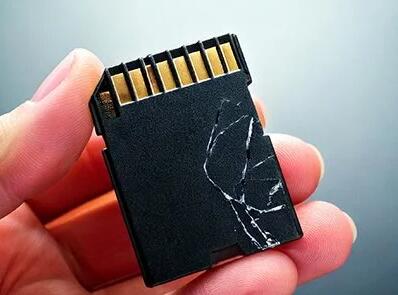Recovering data from a damaged SD card can be a daunting task, but with the right approach and tools, it’s often possible to retrieve your valuable files.
1. Initial Assessment
Before attempting any recovery, evaluate the condition of your SD card:
Physical Damage: Inspect the card for visible signs of damage, such as cracks or bent connectors. If the card is physically damaged, professional data recovery services may be necessary.
Logical Damage: If the card appears intact but is not recognized by your device or shows errors, it may be logically corrupted. In such cases, software-based recovery methods can be effective.

2. Precautionary Measures
To prevent further data loss:
Stop Using the SD Card: Avoid writing new data to the card, as this can overwrite existing files and reduce the chances of successful recovery.
Create a Disk Image: Use tools like R-Studio to create a byte-by-byte image of the SD card. This allows you to work on the image file, preserving the original card from potential damage during recovery attempts. Reddit
3. Software-Based Recovery Methods
Panda Assistant is a versatile data recovery software that specializes in retrieving lost, deleted, formatted, or corrupted files from a variety of storage devices. Whether you’re dealing with a malfunctioning hard drive, a damaged SD card, a USB flash drive, or even a digital camera, Panda Assistant is built to help you get your data back safely.
Key Features
1. Deep & Quick Scan Modes
Panda Assistant offers two scan modes:
Quick Scan swiftly locates recently deleted files with minimal effort.
Deep Scan digs deeper into the file system, recovering files from severely corrupted, formatted, or inaccessible storage media.
2. File Type Support
The software supports recovery for a wide range of file types, including documents (DOCX, XLSX, PDFs), images (JPG, PNG, RAW), videos (MP4. AVI, MOV), audio files, compressed archives, and even emails.
3. Device Compatibility
Panda Assistant works across various devices and storage formats. From internal and external hard drives to memory cards, USB sticks, and SSDs, it provides comprehensive support for FAT32. NTFS, exFAT, and other common file systems.
4. Preview Before Recovery
One of the standout features is its preview function, which lets users see the files before restoring them. This ensures you only recover what you need, saving time and storage space.
How It Works
Using Panda Assistant is straightforward, even for users with minimal technical experience:
Install and Launch
Download and install the software on your PC or Mac. Launch it to begin the recovery process.
Select the Storage Device
Choose the device from which you want to recover data. This could be a local disk, external drive, or memory card.
Scan for Lost Files
Select a scan mode and let Panda Assistant analyze your device. The software will display a list of recoverable files once the scan is complete.
Preview and Recover
Use the preview feature to examine the files. Select the ones you want to restore and click “Recover” to save them to a secure location on your system.
4. Advanced Recovery Techniques
If standard methods fail, consider the following advanced options:
a. ddrescue
GNU ddrescue is a command-line tool that can recover data from failing storage devices by copying data to another location. It’s particularly useful for creating disk images of damaged SD cards. TECHCOMMUNITY.MICROSOFT.COM
Steps:
Install ddrescue on your system.
Use the command ddrescue /dev/sdX /path/to/imagefile /path/to/logfile (replace /dev/sdX with your SD card’s device identifier).
Once the image is created, use recovery tools like PhotoRec on the image file.
b. Professional Data Recovery Services
If the SD card has severe physical damage or if software solutions are unsuccessful, professional data recovery services may be necessary. These services have specialized equipment and expertise to recover data from physically damaged media.
5. Preventive Measures
To minimize the risk of future data loss:
Regular Backups: Frequently back up important data to multiple storage devices or cloud services.
Proper Ejection: Always use the ‘Safely Remove Hardware’ option before disconnecting the SD card.
Avoid Physical Damage: Handle SD cards carefully and store them in protective cases.
Use Reliable Hardware: Invest in high-quality SD cards and card readers from reputable brands.
About us and this blog
Panda Assistant is built on the latest data recovery algorithms, ensuring that no file is too damaged, too lost, or too corrupted to be recovered.
Request a free quote
We believe that data recovery shouldn’t be a daunting task. That’s why we’ve designed Panda Assistant to be as easy to use as it is powerful. With a few clicks, you can initiate a scan, preview recoverable files, and restore your data all within a matter of minutes.

 Try lt Free
Try lt Free Recovery success rate of up to
Recovery success rate of up to









